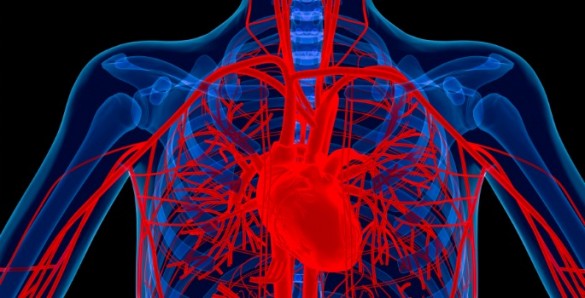Patients who present to an emergency department with a type of heart attack known as a STEMI and do not have insurance are much more likely to be transferred from one medical facility to another than patients who do have insurance, according to a study published in The American Journal of Cardiology.
When a person suffers an ST elevation myocardial infarction (STEMI), time is muscle. The faster the patient can get to a medical facility that offers interventional therapy to unblock their clogged artery, the more cardiac muscle is preserved and the better the outcome.
Not every hospital is equipped to provide percutaneous coronary intervention (PCI), the life-saving technique used to open a blocked artery with a balloon catheter. Patients who arrive at an emergency department in a hospital without PCI need to be transferred to a PCI facility.

“Our objective was to determine whether insurance status is a predictor of inter-facility transfer for emergency department visits with STEMI,” said first author, Michael Ward, assistant professor of Medicine.
Ward and colleagues analyzed data from the 2006 through 2011 Nationwide Emergency Department Sample examining all emergency department visits for patients 18 years and older with a diagnosis of STEMI and a trend of inter-facility transfer or hospitalization at the same institution.
Using data from NED, they found that among 1,377,827 emergency department STEMI visits, including 249,294 (18.1%) transfers, patients without health insurance were 60 percent more likely to be transferred than those with insurance.
Lack of health insurance status was also an independent risk factor for transfer compared to each subcategory of health insurance, including Medicare, Medicaid and private insurance, according to the study.
The goal for opening a blocked artery caused by STEMI is less than 90 minutes if a patient presents to a facility with PCI. When a patient is transferred, only 10 percent of them can achieve that timeframe, Ward said.
Outcomes are still pretty good if reperfusion occurs under 120 minutes; however, only 30 percent of transferred patients achieve that.
“Patients without insurance are much more likely to be transferred, and therefore less likely to have timely care in a setting of acute cardiac emergency,” Ward said. “We don’t know if patients without insurance tend to present to hospitals without full-time cardiac cath capabilities, or if they are being transferred. We can’t conclude that yet.”
This study was supported by award number HL109019 from the National Heart, Lung and Blood Institute and is currently supported by NIH grant HL127130.
Contributors to this study include Sunil Kripalani, M.D., MSc., Yuwei Zhu, M.D., MS, Alan Storrow, M.D., Thomas Wang, M.D., Theodore Speroff, M.D., Daniel Munoz, M.D., MPA, Robert Dittus, M.D., MPH, Frank Harrell Jr. Ph.D., Wesley Self, M.D., MPH.















